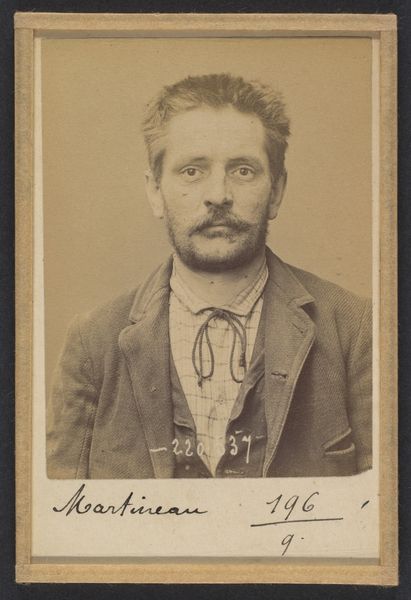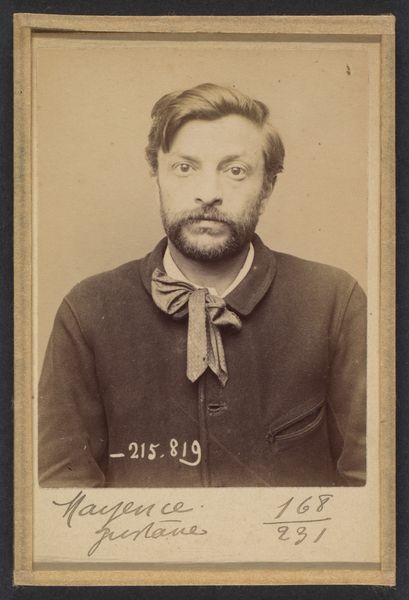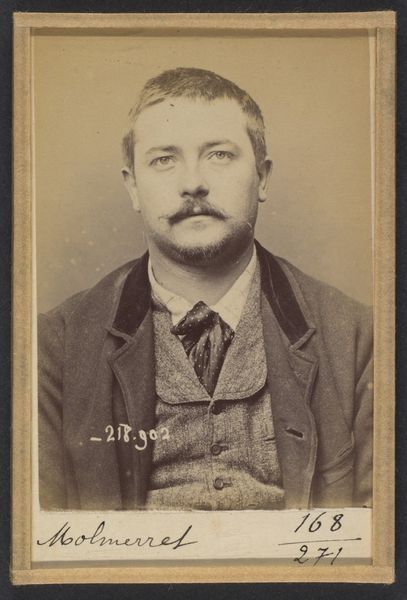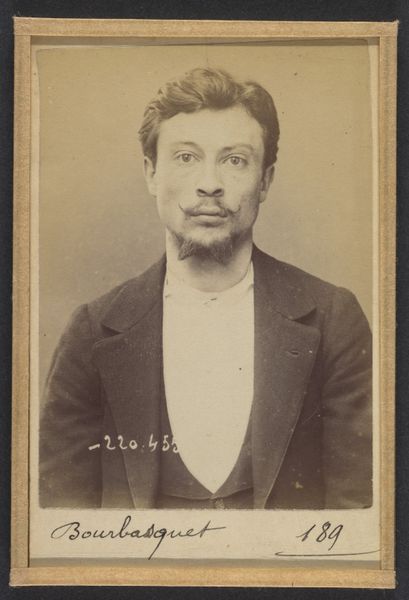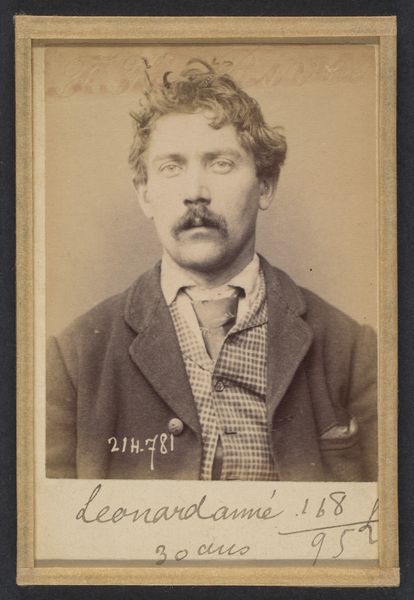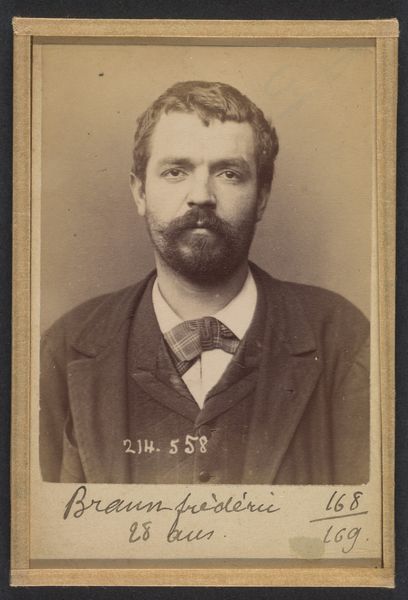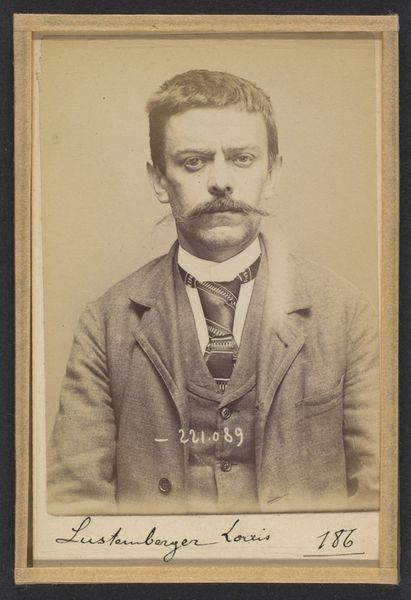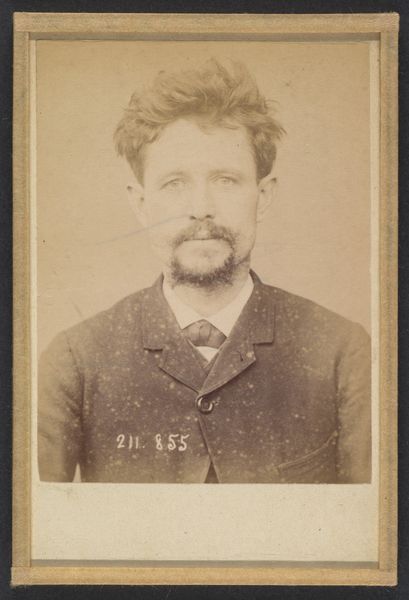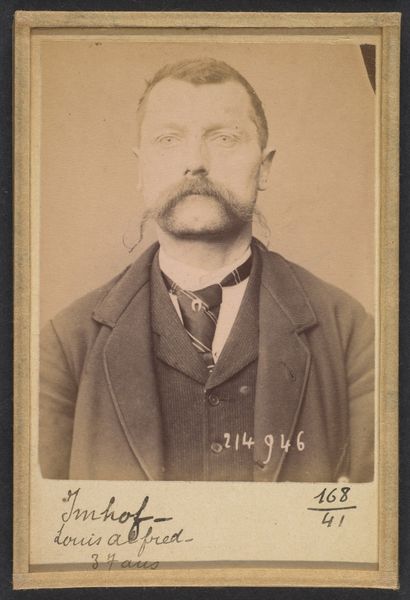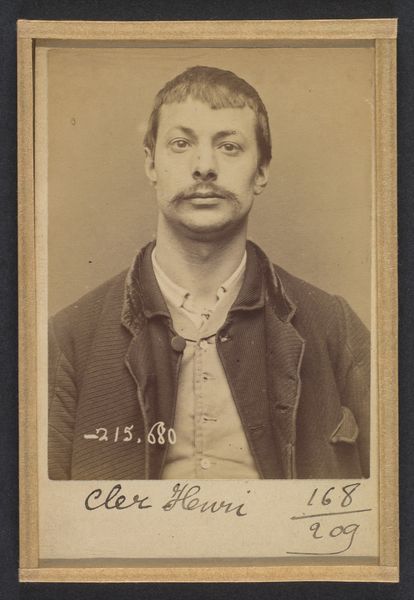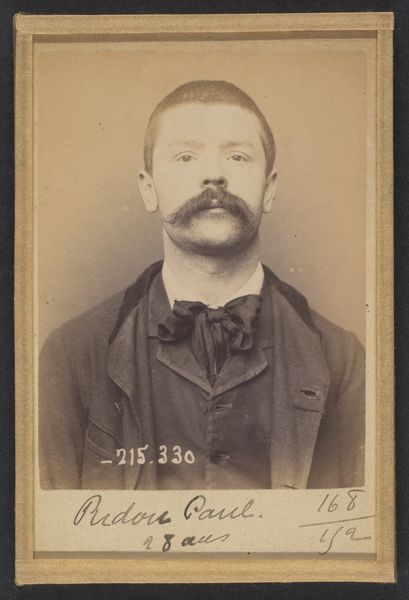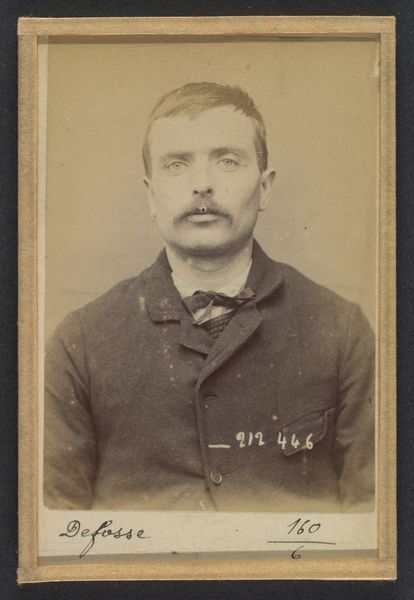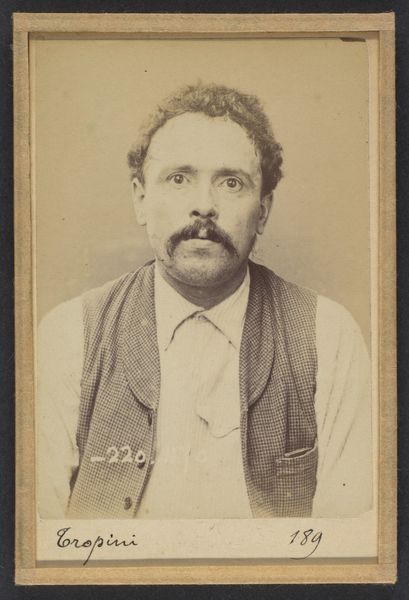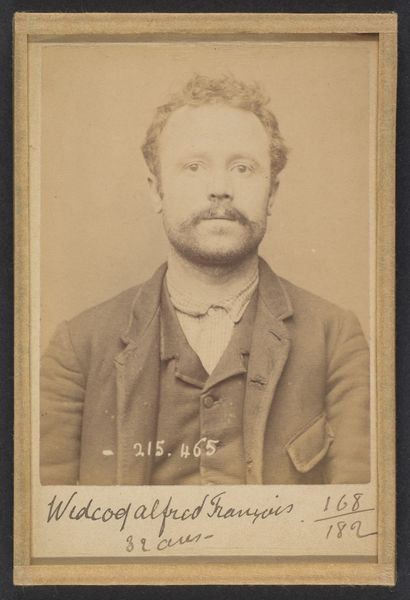
Ponchia. Charles, Albino. 32 ans, né le 1/3/62 à Montanaro (Italie). Menuisier. Anarchiste. 2/7/94. 1894
0:00
0:00
photography, gelatin-silver-print
#
portrait
#
african-art
#
portrait
#
photography
#
gelatin-silver-print
Dimensions: 10.5 x 7 x 0.5 cm (4 1/8 x 2 3/4 x 3/16 in.) each
Copyright: Public Domain
Curator: Alphonse Bertillon captured this gelatin silver print in 1894. Titled "Ponchia. Charles, Albino. 32 ans, né le 1/3/62 à Montanaro (Italie). Menuisier. Anarchiste. 2/7/94," it is currently held at the Metropolitan Museum of Art. Editor: My first impression is… unsettling. There's a weariness etched onto his face that transcends the photographic process. The uniform lighting, the stark background… it's all so clinical and dehumanizing. Curator: That clinical feel is deliberate, I believe. Bertillon was pioneering the use of photography for criminal identification. He sought a standardized, reproducible image for the police. The materials themselves reflect this. The gelatin silver print allowed for mass production and dissemination, making it an ideal tool for surveillance. Editor: So the symbols aren’t about this man's inherent identity, but the identity the *system* assigns him. It’s fascinating how photography, with its promise of objective truth, can be so easily manipulated into a tool of social control. Look at the placard with the precise documentation – a birth date, profession. This meticulously assembled identity is meant to fix him within a certain framework. The way the light falls also almost feels like interrogation. Curator: Indeed, every element contributes to a categorization process. Ponchia's profession is documented as 'menuisier,' a woodworker. It is interesting to ponder the social context around him, from his labor as a menuisier in Italy to becoming labelled as ‘Anarchiste.’ This photo and his information, as data, become elements that potentially alter the direction of labor systems. Editor: Precisely. His image becomes a symbol for broader anxieties about social unrest, the so-called ‘anarchist threat.’ This image taps into existing fears. It becomes more than just a picture of a man, it's a representation of a cultural anxiety. He carries this charged association forward in every glance. Curator: By focusing on Bertillon’s photographic process and intent, it underscores the social impact this photograph embodies – a snapshot that mirrors shifting concepts of labor and personhood at the turn of the century. Editor: The picture resonates with this tension still. Ponchia's captured image carries a history of fear. A sober reminder.
Comments
No comments
Be the first to comment and join the conversation on the ultimate creative platform.
